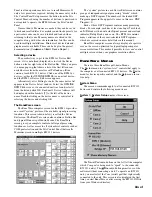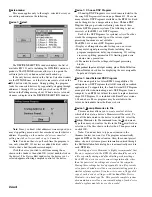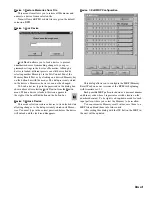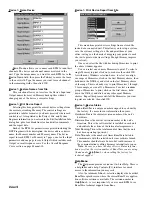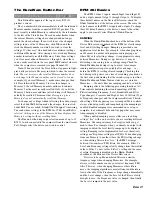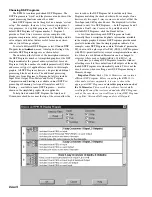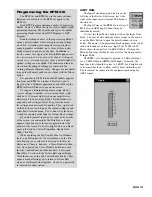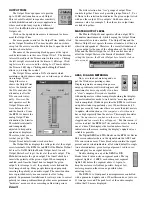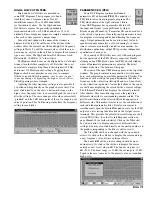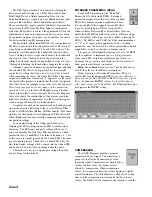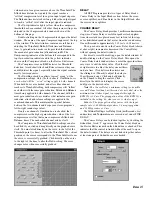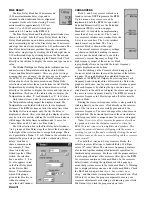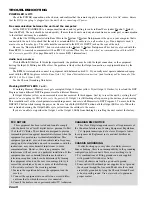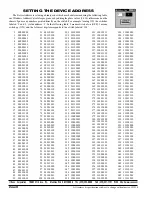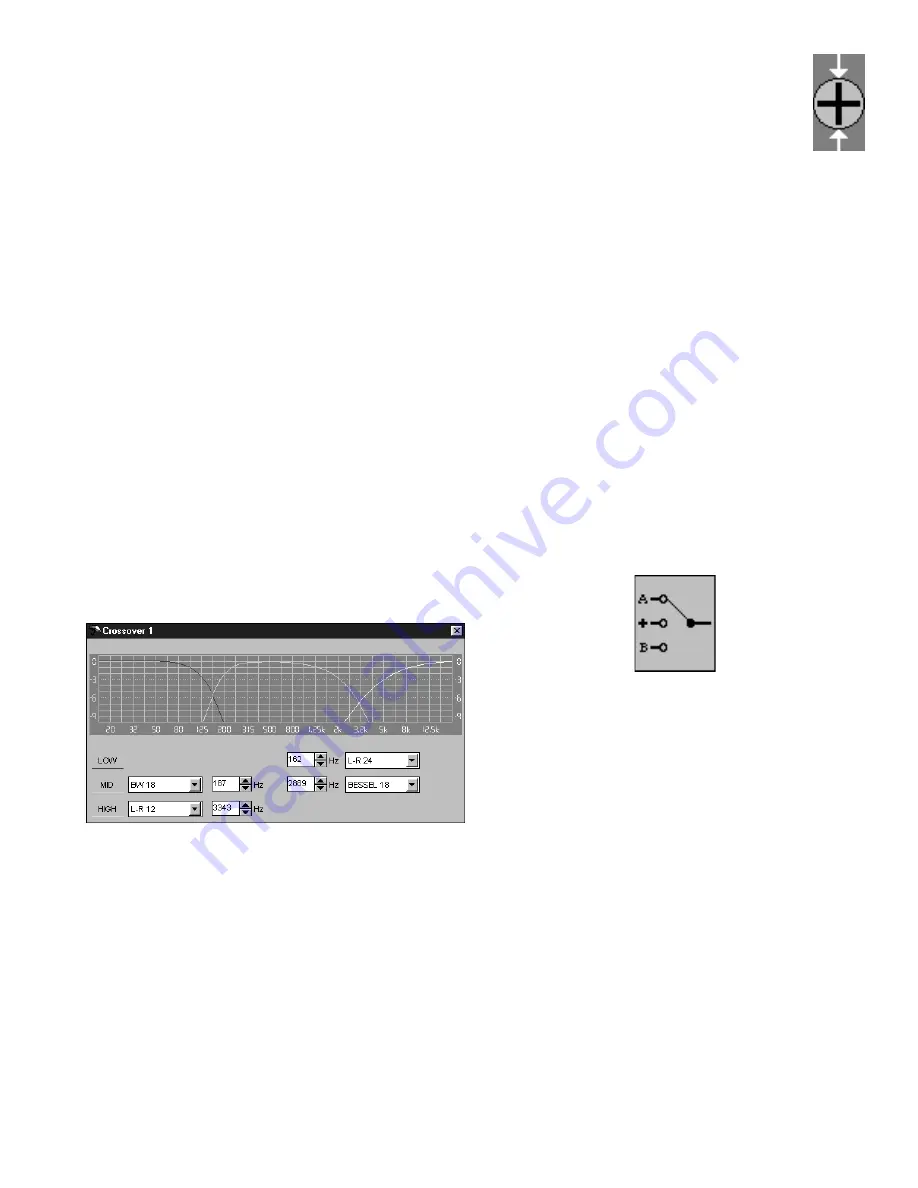
Manual-19
Once in Advanced mode, more edit boxes appear allowing
precise control of each individual filter type, slope and
frequency. This allows Linkwitz-Riley (
LR
), Butterworth
(
BW
) or
Bessel
filters with
12
,
18
or
24
dB per octave
slopes, where applicable, and independent frequency settings
for each filter.
One can return from Advanced crossover mode to Simple
mode with the right mouse click menu, however, you must
return both the crossover filter types back to
LR-24
(Linkwitz-Riley 24 dB/Oct.) and the crossover frequency
points back to the same frequency value.
A 24 dB per octave (4
th
order) Linkwitz-Riley filter is
made up of two cascaded 12 dB per octave (2nd order)
Butterworth filters. Therefore, there is no such thing as an 18
dB per octave (3rd order) Linkwitz-Riley filter, since imple-
mentation of a 1½ order Butterworth is unheard of—though
someone may come up with a 1½ wheeled bike! (There’s a
good
joke in there somewhere…)
As with the Simple crossover mode, click and drag on the
graphed curve to alter the crossover frequency settings. In
advanced mode, however, each filter slope is independently
editable. You can still click directly on the intersection of two
curves to edit two filters’ settings simultaneously. Or click on
an individual curve’s downward slope to alter a single filter
by itself.
Note:
It is wise to alter crossover frequencies directly on
the graph only when the outputs are muted or when the RPM
26i is not connected to amplifiers and speakers. This avoids
the potential catastrophe of slipping with the mouse or
reaching again for your latté and accidentally clicking the
mouse!
SUMMING AND I/O ROUTING
Some DSP Programs provide simple Input
Summing that is generally accompanied by
I/O Routing. The circled “plus” sign between the
two Input Blocks indicates that summing is
supported. A schematic drawing of a three position
switch with
A
,
B
and
+
markings indicates that I/O
Routing is available for the given output.
The Input summing simply adds the two input audio
signals together. For example, if both inputs are in phase and
each is 1 volt RMS, the simple sum of the two would be, all
you math whizzes out there, 2 volts. Note that this sends more
signal to the Output Block processing which may require
additional Trim at the Outputs or Inputs. Be especially aware
of the amount of parametric EQ boost used in summed
outputs,
since too much may result in digital clipping.
Many DSP Programs also support user switchable I/O
routing indicated by a switch schematic symbol in the
simplified graphic or in the Device Edit screen. This allows
each output to be fed from either
Input A
,
Input B
or the
simple sum of
Input A+B
. This functionality provides simple
and convenient room switching for ballroom applications
where the input source can be changed through a simple
contact closure. It also can provide a quick mono source for
balcony or cry rooms or, when used in conjunction with the
output PEQ, can provide a subwoofer output.
Double-click on the circular
A
,
B
or
+
switch terminal to
move the switch’s Output (i.e., common) to the desired Input.

